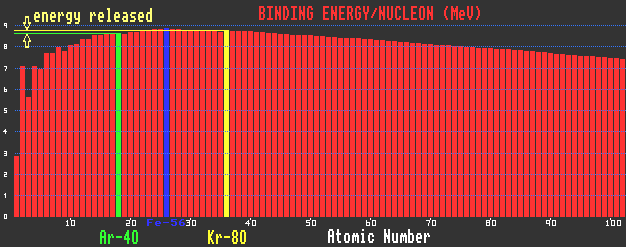

But, theoretically, there is no reason why fusion between two nuclei lighter than iron should not produce a nucleus heavier than iron and still release energy. For instance, if two atoms of argon-40 (total binding energy 2 x 342.8 = 687.6 MeV) were to undergo fusion, krypton-80 (total binding energy 695.4 MeV) would be the result, releasing a net 7.8 MeV of energy. Note that krypton-80 is much heavier than iron-56, the nuclide with the highest binding energy per nucleon.
Fusion between elements heavier than iron, the element with the highest binding energy, is still possible, but not energetically favourable, that is, the fusion will consume energy rather than release energy if the product nuclide is heavier than the sum of the two lighter nuclides used in its' making. Indeed, this is how super heavy elements beyond fermium are made in the laboratory.
See 'Superheavy Nuclei' (Transfermium production).
![]()